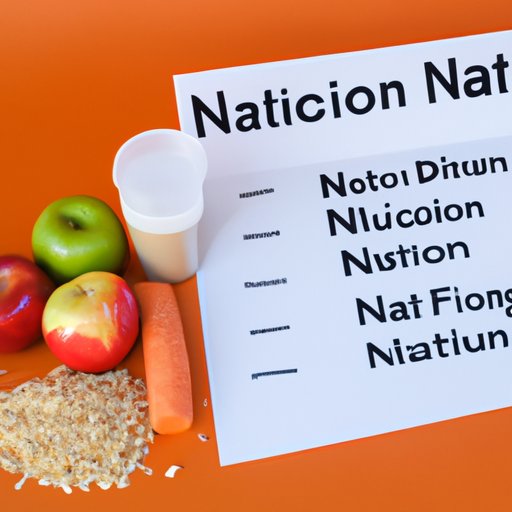Introduction
Have you ever heard the saying, “muscle weighs more than fat”? But is it really true? Understanding the difference between muscle and fat is crucial for managing weight and overall health. In this article, we’ll explore the science behind muscle and fat, debunk a common myth, and provide tips for achieving a healthy balance of muscle and fat in the body.
Benefits of measuring your body fat and muscle mass
Measuring body fat and muscle mass can help you track your progress more accurately and make adjustments to your exercise and nutrition plan accordingly. Understanding your body composition can also provide important information about your overall health. For example, carrying excess fat around the abdomen is associated with an increased risk of heart disease and other health conditions.
There are various ways to measure body fat and muscle mass, including body fat scales, skinfold calipers, and DEXA scans (dual-energy x-ray absorptiometry).
The science behind muscle and fat
Muscle tissue is made up of long, contractile fibers that work together to produce movement. Adipose tissue, or fat, is a type of connective tissue that stores energy in the form of triglycerides.
Muscle tissue is more metabolically active than adipose tissue, meaning it requires more energy (calories) to maintain. This is partly why having a higher percentage of muscle mass is associated with a faster metabolism.
Interestingly, muscle tissue is actually denser than adipose tissue. This means that, pound for pound, muscle takes up less space than fat. However, because it is denser, muscle tissue actually weighs more than an equal volume of fat.
Debunking the myth: 1 pound of muscle is not equal to 1 pound of fat
The saying “muscle weighs more than fat” is often used to illustrate the difference between muscle and fat. However, it’s not technically accurate to say that one pound of muscle weighs more than one pound of fat! A pound is a pound, after all.
Instead, the point of the saying is to emphasize that muscle tissue is denser than fat tissue. This means that, even though one pound of muscle and one pound of fat weigh the same, the muscle takes up less space than the fat. This is why you might notice your clothes fitting differently even if you don’t see a change on the scale.
It’s also important to note that building muscle and losing fat are separate processes. While it’s possible to do both at the same time, it generally requires a specific approach to exercise and nutrition.
Understanding body composition
Body composition refers to the relative amounts of muscle, fat, and other tissue in the body. Having a healthy body composition means having an appropriate balance of muscle and fat for your age, sex, and activity level.
Both too much and too little body fat can be associated with health risks. For example, carrying excess body fat around the abdomen is linked to an increased risk of heart disease and other health conditions. On the other hand, having too little body fat can lead to hormonal imbalances and other health problems.
When it comes to muscle, having more muscle mass is generally associated with better health outcomes. This includes benefits like improved bone density, better glucose control, and increased metabolic rate.
The difference between weight loss and fat loss
It’s important to understand that weight loss and fat loss are not the same thing. Losing weight simply means that the number on the scale is decreasing. However, some of that weight may come from muscle mass (which we now know weighs more than fat).
Fat loss, on the other hand, specifically refers to a decrease in body fat percentage. This is generally a more accurate indicator of progress in terms of overall health and fitness.
When you focus solely on weight loss, you run the risk of losing muscle mass along with fat. This can slow down your metabolism and make it harder to maintain weight loss in the long run.
Tips for gaining muscle and losing fat
If you’re looking to both build muscle and lose fat, there are a few key things to keep in mind.
First and foremost, strength training is crucial for building muscle. This includes exercises like squats, deadlifts, push-ups, and pull-ups.
In addition to strength training, you’ll also want to incorporate some form of cardio into your routine. This can help burn extra calories while also improving cardiovascular health.
Finally, it’s important not to restrict calories too severely. This can lead to loss of muscle mass, which is counterproductive when trying to build strength and boost metabolism. Instead, aim for a moderate calorie deficit (meaning you’re consuming slightly fewer calories than you’re burning) and focus on getting adequate protein to support muscle growth.

The role of nutrition and exercise in building muscle and losing fat
Nutrition and exercise are both crucial components of building muscle and losing fat. In order to support muscle growth, you’ll need to consume an adequate amount of protein and other nutrients.
Some of the best sources of protein for muscle growth include lean meats, fish, eggs, tofu, and dairy products. You may also want to consider supplementing with protein powder to help meet your needs.
In terms of exercise, focusing on strength training and high-intensity interval training (HIIT) can be especially effective for building muscle and burning fat. These types of workouts help boost metabolism and support muscle growth simultaneously.
Conclusion
While the saying “muscle weighs more than fat” may not be technically accurate, it highlights an important point: building muscle and losing fat are separate processes that require different approaches. Understanding body composition and focusing on both gaining muscle and losing fat is key for overall health and fitness. By incorporating strength training, cardio, and a balanced nutrition plan, you can achieve a healthy body composition in a sustainable and effective way.
